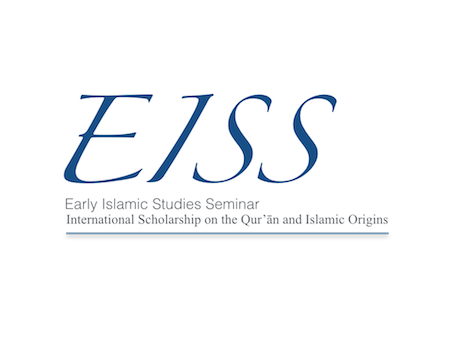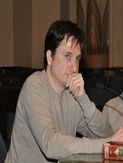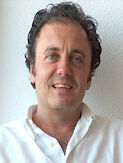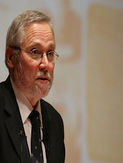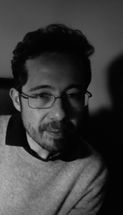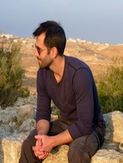Early Islamic Studies Seminar (2013-), learned society
The Early Islamic Studies Seminar: International Scholarship on the Qur’ān and Islamic Origins (EISS) is an academic group of international specialists associated to the Enoch Seminar: International Scholarship on Second Temple Judaism, Christian, Rabbinic, and Islamic Origins who work together, share the results of their research in the field and biennially meet to discuss topics of common interest within the Enoch Seminar Nangeroni Meetings.
Board of Directors
- Dye, Guillaume (Free University of Brussels [ULB], Belgium, EU) gdye@noos.fr
- Gonzalez Ferrin, Emilio (University of Seville, Spain, EU) ferrin@us.es
- Kropp, Manfred (Johannes Gutenberg University of Mainz, Germany, EU) kropp@uni-mainz.de
- Segovia, Carlos A. (Saint Louis University, Spain, EU / Enoch Seminar) segoviaca@slu.edu.
- Tesei, Tommaso (Van Leer Jerusalem Institute, Israel) teseitommaso@gmail.com
Background and Purpose
The study of Islam’s origins from a rigorous historical and social science perspective is still wanting. Whereas the grand narratives of Islamic origins contained in the earliest Muslim writings have usually been taken to describe with some accuracy the hypothetical emergence of Islam in mid-7th-century Arabia, they are nowadays increasingly regarded as too late and ideologically biased – in short, as too eulogical – to provide a reliable picture of Islam's origins. Accordingly, new timeframes going from the late 7th to the mid-8th century and alternative Syro-Palestinian and Mesopotamian spatial locations are currently being explored. On the other hand, a renewed attention is also being paid to the once very plausible pre-canonical redactional and editorial stages of the Qur'an, a book whose core many contemporary scholars agree to be a kind of “palimpsest” originally formed by different, independent writings in which encrypted passages from the OT Pseudepigrapha, the NT Apocrypha and other ancient writings of Jewish, Christian and Manichaean provenance may be found, and whose original function, therefore, is far from being clear. Likewise the earliest Islamic community is presently regarded by many scholars as a somewhat undetermined monotheistic group that evolved from an original Jewish-Christian milieu into a distinct Muslim group perhaps much later than commonly assumed and in a rather unclear way, either initially dependent on the new Arab polity in the Fertile Crescent or more or less independent from it; or else as being originally a Christian movement. Finally the biography of Muhammad, the founding figure of Islam, has also been challenged in recent times due to the paucity and, once more, the late date and literary nature of the earliest biographical accounts at our disposal. In sum three major trends of thought define today the field of early Islamic studies: (a) the traditional Islamic view, which many non-Muslim scholars still uphold as well; (b) a number of revisionist views which have contributed to reshape afresh the contents, boundaries and themes of the field itself by reframing the methodological and hermeneutical categories required in the academic study of Islamic origins; and (c) several still conservative but at the same time more cautious views that stand half way between the traditional point of view and the revisionist views. The Early Islamic Studies Seminar aims at exploring afresh different the dawn and early history of Islam with the tools of Biblical criticism and the new social science methods (critical discourse analysis, narrative theory, semiotics of religion, deconstructionist historiography, etc.) set forth in the study of Second Temple Judaism, Christian and Rabbinic origins, and thereby contribute to the renewed, interdisciplinary study of formative Islam as part and parcel in the complex process of religious identity formation in late antiquity.
To achieve its goals the EISS will develop several simultaneous activities such as different research projects, online workshops, close-door meetings, international conferences and publications. All online workshops will be hosted at the EISS website, and a series of close-door meetings will help each to achieve its specific goals. Biennial international conferences to discuss topics of common interest will be held within the Enoch Seminar: International Scholarship on Second Temple Judaism, Christian, Rabbinic, and Islamic Origins ‘Nangeroni Meetings’ www.enochseminar.org. In addition the EISS will be responsible for the contents of the Early islamic Studies section on 4 Enoch: The Online Encyclopedia of Second Temple Judaism (Jewish, Christian, and Islamic Origins).
To learn more about our current activities and projects please contact the Board of Directors.
Upcoming Projects (2014-2016)
Online Workshops
EPIGRAPHIC SOURCES FOR THE STUDY OF QUR'ĀNIC ORIGINS
Chair: Manfred Kropp (Johannes Gutenberg University of Mainz, Germany, EU)
- Texts stemming from epigraphic material – inscriptions, graffiti, but also texts written on objects and documents on papyrus and other writing materials, and in a wide perspective, legends on coins, medals and seals – differ from literary texts by several peculiarities. They are – at least as a general rule – unique pieces, directly transmitted and product of juridical or other social procedures, thus not part of intentional historical tradition; in short they are primary sources. On the other hand, it is true, texts of this kind are normally short and stereotyped, addressed only to persons involved in the actual act, and presume precise knowledge of the respective procedure to be understood. Thus the late born historian is in need for additional data, coming from archaeological evidence or extensive tradition (literature, historiography, etc.).Material of this kind is available in the Arabian peninsula dating from pre-Islamic and early-Islamic times and thus of importance for the study of Qurʾānic origins and early Islam. Here a first short list:– Texts in Epigraphic South Arabian languages, coming mostly from Yemen, but scattered as well all over the Arabian peninsula and adjacent regions. These are stone inscriptions and texts written on other material (palm sticks) as well as coin legends. Besides the typical documents there are very few literary texts.– Texts in non-Semitic languages (Greek and Latin)– Texts in Semitic, but not Arabian languages and script: Nabataean, Jewish and Christian Aramaic, of lesser interest because chronologically and geographically more distant Palmyrene and Hatraen. Al-Ḥīra as an important pre-Islamic (Arab) centre has not yielded till now relevant material.– Texts in Early North Arabian languages / dialects and in several varieties of early North Arabian alphabets: Safaitic, Thamudic, Lihyanite, Hasaitic.– Texts in "Arabic" (North Arabian in the narrow sense) in several scriptures (Nabataean, South Arabian).– Texts in "Arabic" and Arabic script, inscriptions, papyri, coin legends. In this category the collection of few pre-Islamic inscriptions recently has been enriched by new finds in the Arabian peninsula of late pre-Islamic and early Islamic documents illuminating the development of the Arabic script. To be mentioned is an early-Islamic specimen of Arabic poetry.Within the aforesaid limitations of this kind of source material the collection and consecutive methodical study of these documents may shed further light on important questions concerning the historical context out of which Islam and its fundamental document originated: (a) From where and how did the Arabic script develop? (b) What is the language intended by the first Qur’ānic and purely consonantal texts? (c) Which common ideas and concepts were circulating and were part of the political, social, religious and cultural atmosphere?
EARLY ISLAMIC ESCHATOLOGY
Chair: Tommaso Tesei (Van Leer Institute Jerusalem, Israel)
- Although they occupy a central place in the theological discourse of the Qur’ān, doctrines of death and the afterlife in the Islamic scripture have been afforded surprisingly little attention by scholars. Equally surprising is the absence of systematic studies that address the relation between the Qur’ān’s eschatology and the eschatological systems of the various other religious communities of the Late Antique Near East. Yet, the comparative approach offers an entry-point for scholars to investigate the doctrines—eschatological or other—professed by the Qur’ānic text. Being primarily an exhortative text, the Arabic scripture generally neither seeks to establish a systematic theology nor provides its audience with elucidations on its theological statements. At the same time, the Arabic scripture repeatedly makes allusions to doctrines dealing with these and other questions, doctrines that were widespread in the Late Antique Near East. Evidently, the Qur’ān presupposes its audience to be familiar with these doctrines. Thus, a thorough comparative analysis of the eschatological creeds professed by the contemporaries of the early community believers—later identified as Muslims—is crucial to a correct understanding of the Qur’ānic theological presentation of death and the afterlife. At the same time, such analysis also offers new perspectives to better determine the doctrinal character of the proto-Muslim community, the Qur’ān being the earliest extant document to study this religious movement. The present research project involves an investigation of Qur’ānic and early Islamic beliefs about the afterlife in light of the cultural context and the intellectual history of late antique Middle East. The major aims of this research are: (1) to compile a comprehensive overview of the eschatological thoughts found in the Qur’ān and early Islamic traditions; (2) to determine to what extent such system of ideas follows the literary trends, theological perspectives and cultural beliefs of the contemporaneous religio-cultural environment; (3) to establish, based on this data, whether the Qur’ānic eschatological discourse simply refers to a local Arabian context, or if it participates in the broader theological discussions of the Late Antique Near East; and (4) to investigate to what degree the Qur’ān and the early community of believers shared the apocalyptic sentiments widespread in the 7th c. Middle East and to determine if the Qur’ānic eschatological discourse was originally meant to fulfill apocalyptic or millenarian expectations.
THE QUR'ĀN IN LIGHT OF TRADITIO-HISTORICAL CRITICISM
Chair: Guillaume Dye (Free University of Brussels [ULB], Belgium, EU)
- As John Wansbrough noticed a few decades ago: "As a document susceptible of analysis by the instruments and techniques of Biblical criticism [the case for the Qur’ān as Scripture] is virtually unknown." This is related to the excessive reliance of many scholars to a kind of secular version of the Muslim narrative on the genesis of the Qur’ān, which considers it as an accurate record of Muhammad’s words, faithfully transmitted by tradition. However, such a conservative approach relies more on assumption than on proof, and recent works have shown that the Qur’ān was not ready at the time of Muhammad’s death, and that the editorial work in the following decades did not merely consist in the rearrangement of existing pericopes, but also in the reinterpretation and rewriting of prophetic logia and liturgical texts, and even in the writing of new pericopes. In other words, the Qur’ān is both a composite and composed text (with at least three levels of composition: individual pericopes, suras, codex – and the people responsible of the last two levels shouldn’t be seen only as compilers, but also as authors). It seems therefore necessary to give up the traditional chronology of Meccan and Medinan suras and consider the Qur’ān inside a larger diachrony – let’s say up to the time of ‘Abd al-Malik (it remains difficult to date precisely the eldest material witnesses to the text, and all what can be said at present is that the rasm of the Qur’ān probably took a shape close to the one we now know sometime during the second half of the 7th Century and the beginning of the 8th Century). Hence source criticism, Formgeschichte and Redaktionskritik – and also synchronic methods – can certainly shed light on the history of the Qur’ān and the first “Islamic” communities. Moreover, the concepts of traditio-historical criticism pertain the interpretation of individual qur’ānic passages: for instance, how many arbitrary interpretations could have been avoided, if scholars had kept in mind the (obvious, but unheard of in mainstream Qur’ānic studies) distinction between Sitz im Buch and Sitz im Leben? This group discussion will interact with the other subprojects of the EISS, and will especially rely on the tools and results of the computational project of a Compressed Qur’ān. Among various tasks, it will study the scribal devices and techniques used in the Qur’ān, try to sketch a profile of the scribes implied in its composition, and, if possible, set up a more realistic chronology, less dependent on the “evidence” of the Muslim tradition.
JESUS IN THE QUR'ĀN
Chair: Carlos A. Segovia (Saint Louis University, Spain, EU / Enoch Seminar)
- The Qur’ān is often interpreted as displaying a twofold contradictory attitude towards Christianity that oscillates between its approval and its dismissal. Jesus’ presentation reflects this complex attitude: on the one hand, he is described as the “son of Mary” against the Christian belief on his divine status; on the other hand, he is acknowledged to be the Messiah. However, a close examination of the Quranic passages mentioning Jesus shows that things are far more complex than this binary approach suggests. Firstly, it is by no means evident that all pre-Islamic Arab Christians accepted Jesus’ divine sonship; therefore, downplaying the latter need not be regarded as being specifically anti-Christian. Secondly, both Jesus’ name in the Qur’ān and his aforementioned description as the “son of Mary” have clear parallels in Dyophysite/Nestorian, and hence Eastern-Syriac, Christianity; thus they could have likewise been acceptable for at least some Christians of late antiquity. Thirdly, Jesus’ two additional Quranic titles as “God’s word” and “God’s spirit,” as well as the Quranic narratives about his miraculous birth and miracles and his implicit depiction as the second or true Adam, amount to the view that he was conferred a very especial role within the early proto-Muslim faith. Lastly, the frequent anti-Jewish overtones of the Quranic narratives about Jesus contribute in their own way to strengthen this point. For these reasons, it is worth reconsidering in some depth what we think we know about the Quranic Jesus and examining afresh early Muslim-Christian relations. The fact, moreover, that a text mentioning Jesus was intentionally placed at the very centre of the two inscriptions contained within the walls of the Dome of the Rock in Jerusalem – and the similarly intriguing fact that Muhammad and Jesus therein seem to share the very same attributes – suggests that there is more in such relations that meets the eye. Reflecting on these issues is essential for a correct understanding of emergent Islam in its late-antique context.
EARLY ISLAMIC SOURCES AND CHRONICLES IN LIGHT OF A 'THEOLOGY OF SALVATION'
Chair: Emilio Gonzalez Ferrin (University of Seville, Spain, EU)
- Islam is unanimously considered as a "counter-historical" phenomenon that adjourned the natural discourse of History, closing the Late Antique period and laying the foundations of the dichotomic Middle Ages. Such view is powered by a self-assumed otherness of Islam built from within by the interaction and mutual—fragile—support of several sources: the Qur'ān itself, but also the Sīra—biography of the Prophet—, Ḥadīṯ collections and related early materials are envisaged as the ultimate bulwark of a complicated mixture of sacredness, legitimacy and historicity. On behalf of these sources subsequent chronicles were compiled in Arabic language which in turn served as a kind of narrative support—as an origin myth by means of retroactive discourse. And as time went on, subsequent chronicles served to date previous materials. However, a fair dating of these sources based on the materials themselves and not just on their contents as these later came to be considered, as well as other possible historical witnesses to the time thus narrated—to be sought in the epigraphy, numismatics, architectural constructions and even burial areas of the period—show a slightly different historical rhythm. Moreover, those subsequent Arab chronicles can be contrasted to previous chronicles, written mostly in Syriac, Greek and Latin amongst other languages. Considering these pre-Islamic chronicles—that abound in apocalyptic tales—in contrast to those Arab triumphant chronicles, one may describe the gradual change of the whole area—Middle East and South Mediterranean—as following a rate of chronistic systole and diastole out of which the origins of the Middle Ages pump: a first phase of doom followed by a certain history of salvation. Thereby, an inter-textual de-construction of the aforementioned materials would explain and justify the use of an apparent oxymoron behind the expression "Islamic Late Antiquity," thus disregarding the distribution of historical "watertight compartments" and considering the spreading of Islam in gradual continuity. Perhaps more the effect than the cause of a convulsive time.
Additional Workshops
NEW TRENDS IN EARLY ISLAMIC STUDIES 1: INTRODUCING THE EISS (University of Seville, Spain. March 28, 2014)
Chair: Emilio González Ferrín (University of Seville, Spain, EU).
- How and why has our perception of early Islam changed in the past decades? Does it make sense to speak of a paradigm shift – and if so, which are its implications in terms of theory and method? Lastly, how does the EISS fit into that picture – and what concrete projects will it undertake between March 2014 and March 2016?
NEW TRENDS IN EARLY ISLAMIC STUDIES 2 (University of British Columbia, Vancouver, Canada. 2015)
Encyclopaedia Entries
- 4 Enoch: Early Islamic Studies (from the early 19th century to the present)
General Editor: Carlos A. Segovia (Saint Louis University, Spain, EU / Enoch Seminar)
EISS International Conferences – Nangeroni Meetings
EARLY ISLAM: THE SECTARIAN MILIEU OF LATE ANTIQUITY? (2015)
Chair: Guillaume Dye (Free University of Brussels [ULB], Belgium, EU)
Co-Chair: Gabriele Boccaccini (University of Michigan, USA / Enoch Seminar)
Members
Core Members
- Guillaume Dye (Free University of Brussels [ULB], Belgium, EU)
- Emilio González Ferrín (University of Seville, Spain, EU)
- Manfred Kropp (Johannes Gutenberg University of Mainz, Germany, EU)
- Carlos A. Segovia (Saint Louis University, Spain, EU / Enoch Seminar)
- Tommaso Tesei (Van Leer Jerusalem Institute, Israel)
Participants
By Name
- Aghaei, Ali (Forum Transregionale Studien, Germany, EU)
- Agostini, Domenico (Van Leer Jerusalem Institute, Israel)
- Al-Ghul, Omar A. (Yarmouk University, Jordan)
- Amir-Moezzi, Mohammad Ali (École Pratique des Hautes Études, France, EU)
- Assefa, Daniel (Capuchin Franciscan Institute of Philosophy and Theology, Ethiopia / Enoch Seminar)
- Avni, Gideon (Israel Antiquities Authority & Hebrew University of Jerusalem, Israel)
- Azaiez, Mehdi (Catholic University of Leuven, Belgium, EU)
- Baumgarten, Albert I. (Bar-Ilan University, Israel / Enoch Seminar)
- Berg, Herbert (University of North Carolina Wilmington, USA)
- Bermejo Rubio, Fernando (University of Barcelona, Spain, EU)
- Bori, Caterina (University of Bologna, Italy, EU)
- Borrut, Antoine (University of Maryland, USA)
- Boustan, Ra'anan (University of California Los Angeles, USA)
- Boyarin, Daniel (University of California Berkeley, USA / Enoch Seminar)
- Cook, David (Rice University, Texas, USA)
- Courtieu, Gilles (Jean Moulin University Lyon 3, France, EU)
- Crego Gómez, María (Pablo de Olavide University, Spain, EU)
- Decharneux, Baudouin (Free University of Brussels [ULB], Belgium, EU)
- Fedeli, Alba (University of Birmingham, England, UK, EU)
- Fisher, Greg (Carleton University, Ontario, Canada)
- Grypeou, Emmanouela (University of Oxford, England, UK, EU / Enoch Seminar)
- Hainthaler, Theresia (Philosophical-Theological Academy Saint George, Germany, EU)
- Hayajneh, Hani F. (Yarmouk University, Jordan)
- Herrero de Jáuregui, Miguel (Complutense University of Madrid, Spain, EU)]
- Thomas Hoffmann (University of Copenhagen, Denmark, EU)
- Hughes, Aaron (University of Rochester, New York, USA)
- al-Jallad, Ahmad (Leiden University, Netherlands, EU)
- Lange, Christian (Utrecht University, Netherlands, EU)
- Larcher, Pierre (Aix-Marseille University/IREMAM, France, EU)
- Larsen, John Møller (Aarhus University, Denmark, EU)
- Lourié, Basil (Scrinium, Russia / Enoch Seminar)
- Mårtensson, Ulrika (Norwegian University of Science and Technology, Norway)
- Martínez de Castilla, Nuria (Complutense University of Madrid, Spain, EU)
- Møller Larsen, John (Aarhus University, Denmark, EU)
- Monferrer-Sala,Juan Pedro (University of Cordova, Spain, EU)
- Morris, Ian D. (Spanish National Research Council [CSIC], Spain, EU)
- Mortensen, Mette Bjerregaard (Aarhus University, Denmark, EU)
- A. Mourad, Suleiman (Smith College, Massachusetts, USA)
- Neuenkirchen, Paul (École Pratique des Hautes Études, France, EU)
- Oliver, Isaac W. (Bradley University, Illinois, USA / Enoch Seminar)
- Pagani, Samuela (University of Salento, Italy, EU)
- Petersen, Anders Klostergaard (Aarhus University, Denmark, EU / Enoch Seminar)
- Pohlmann, Karl-Friedrich (University of Münster, Germany, EU)
- Polliack, Meira (Tel Aviv University, Israel)
- Pourshariati, Parvaneh (New York City College of Technology, USA)
- Powers, David S. (Cornell University, New York, USA)
- E. Pregill, Michael (Elon University, North Carolina, USA)
- Reed, Annette Yoshiko (University of Pennsylvania, USA / Enoch Seminar)
- Reeves, John C. (University of North Carolina Charlotte, USA)
- Retsö, Jan (University of Gothenburg, Sweden, EU)
- Reynolds, Gabriel Said (University of Notre Dame, Indiana, USA)
- del Río Sánchez, Francisco (University of Barcelona, Spain, EU)
- Rubin, Uri (Tel Aviv University, Israel)
- Satlow, Michael (Brown University, Rhode Island, USA)
- Schindel, Nikolaus (Austrian Academy of Sciences, Austria, EU)
- Shoemaker, Stephen J. (University of Oregon, USA)
- Swanson, Dwight (Nazarene Theological College Manchester, UK, EU)
- Tottoli, Roberto (University of Naples "L'Orientale," Italy, EU)
- Van der Velden, Frank (Germany, EU)
- Watson, Francis (Durham University, Uk, EU)
- Wilk, Mateusz (University of Warsaw, Poland, EU)
- Wood, Philip (The Aga Khan University, England, UK, EU)
- Younes, Munther (Cornell University, New York, USA)
- [...]
By Project
- NEW TRENDS IN EARLY ISLAMIC STUDIES 1: INTRODUCING THE EISS (University of Seville, Spain. March 28, 2014)
- Dye, Guillaume (Free University of Brussels [ULB], Belgium, EU)
- González Ferrín, Emilio (University of Seville, Spain EU)
- Segovia, Carlos A. (Saint Louis University, Spain, EU / Enoch Seminar)
- Crego Gómez, María (Pablo de Olavide University, Spain, EU)
- Martínez de Castilla, Nuria (Complutense University of Madrid, Spain, EU)
- Monferrer Sala, Juan Pedro (University of Cordova, Spain, EU)
- del Río Sánchez, Francisco (University of Barcelona, Spain, EU)
- [...]
- [...]
- [...]
- [...]
Attendees of the EISS Nangeroni Meetings
2015 / Prospective Participants
- Aghaei, Ali (Forum Transregionale Studien, Germany, EU)
- Azaiez, Mehdi (Catholic University of Leuven, Belgium, EU)
- Boccaccini, Gabriele (University of Michigan, USA / Enoch Seminar)
- Bonner Michael (University of Michigan, USA)
- Caterina Bori (Università di Bologna, Bologna)
- Borrut, Antoine (University of Maryland, USA)
- Courtieu, Gilles (Jean Moulin University Lyon 3, France, EU)
- Dye, Guillaume (Free University of Brussels [ULB], Belgium, EU)
- Enriello, Laura Mulayka (Interreligious Studies Academy, Italy, EU)
- Fedeli, Alba (University of Birmingham, England, UK, EU)
- Fisher, Greg (Carleton University, Ontario, Canada)
- González Ferrín, Emilio (University of Seville, Spain, EU)
- Hoffman, Thomas (University of Copenhagen, Denmark)
- Kropp, Manfred (Johannes Gutenberg University of Mainz, Germany, EU)
- Mårtensson, Ulrika (Norwegian University of Science and Technology, Norway)
- Morris, Ian D. (Spanish National Research Council [CSIC], Spain, EU / University of Amsterdam, Netherlands, EU)
- Mortensen, Mette Bjerregaard (Aarhus University, Denmark, EU)
- Neuenkirchen, Paul (École Pratique des Hautes Études [EPHE], France, EU)
- Oliver, Isaac W. (Bradley University, Illinois, USA / Enoch Seminar)
- Pagani, Samuela (University of Salento, Italy, EU)
- Petersen, Anders Klostergaard (Aarhus University, Denmark, EU / Enoch Seminar)
- Pohlmann, Karl-Friedrich (University of Münster, Germany, EU)
- Polliack, Meira (Tel Aviv University, Israel)
- Pourshariati, Parvaneh (New York City College of Technology, USA)
- Powers, David S. (Cornell University, New York, USA)
- Reed, Annette Yoshiko (University of Pennsylvania, USA / Enoch Seminar)
- Retsö, Jan (University of Gothenburg, Sweden, EU)
- Segovia, Carlos A. (Saint Louis University, Spain, EU / Enoch Seminar)
- Shoemaker, Stephen J. (University of Oregon, USA)
- Swanson, Dwight (Nazarene Theological College Manchester, UK, EU)
- Watson, Francis (Durham University, UK, EU)
- Wilk, Mateusz (University of Warsaw, Poland, EU)
- Wood, Philip (The Aga Khan University, England, UK, EU)
Collaborative Institutions
- Enoch Seminar: International Scholarship on Second Temple Judaism, Christian, Rabbinic, and Islamic Origins
- Social Sciences and Humanities Research Council of Canada (SSHRCC)
- University of British Columbia (UBC)
- University of Seville (US)
- Camilo José Cel University (UCJC)
